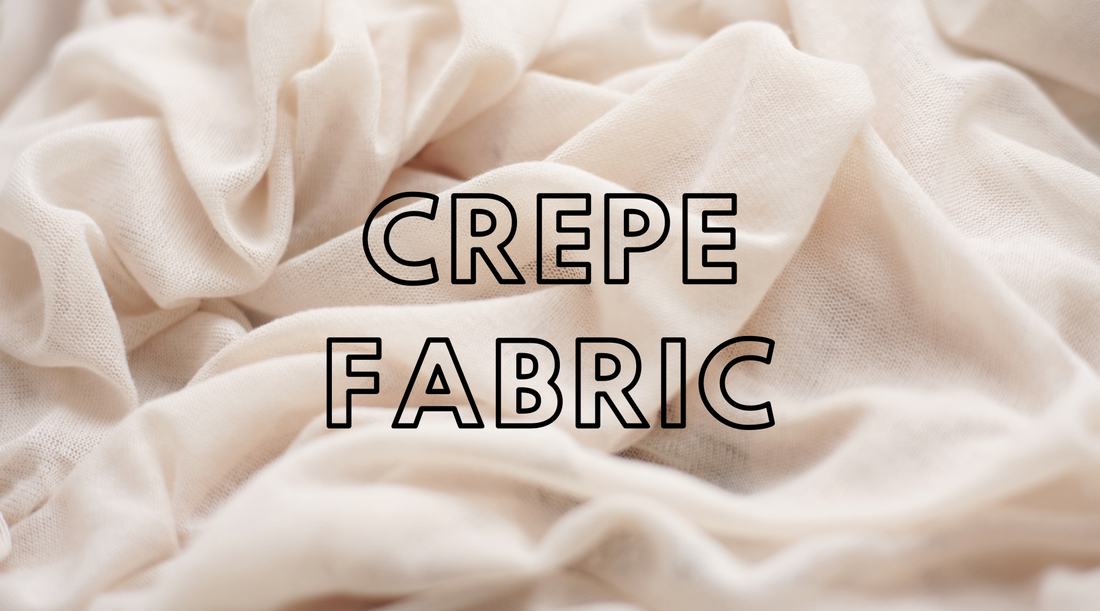What Is Crepe Fabric?
Crepe fabric is a textured textile characterized by its distinctive crinkled or pebbled surface. It's made using a variety of fibers such as silk, wool, cotton, polyester, or blends thereof. The crinkled appearance is achieved through special weaving, knitting, or chemical processes, resulting in a fabric with excellent drape and wrinkle resistance.How Is Crepe Fabric Made?
Pure Crepe fabric can be made through different methods depending on the type of fiber used. Traditionally, silk crepe is produced by weaving tightly twisted yarns in a plain or satin weave, followed by a finishing process involving heat and tension to set the crinkled texture. Other methods include chemical treatments or embossing to create the characteristic crepe surface on synthetic or blended fabrics.How Is Crepe Fabric Used?
Crepe fabric's versatility makes it suitable for various applications. It's commonly used in apparel such as blouses, dresses, skirts, and suits due to its elegant drape and texture. Additionally, it's favored in home decor for curtains, upholstery, and bedding. Its lightweight and breathable nature also make it popular for scarves and other accessories.
Where Is Crepe Fabric Produced?
Crepe fabric production occurs worldwide, with notable production hubs in countries like China, India, Italy, France, and Japan. Each region may specialize in different types of crepe fabric based on local expertise, resources, and manufacturing techniques.
How Much Does Crepe Fabric Cost?
The cost of crepe fabric varies depending on factors such as the type of fiber, quality, production method, and brand. Crepe silk tends to be more expensive due to the luxurious nature of the fiber, while synthetic or blended crepes are typically more affordable. Prices can range from budget-friendly options to high-end designer fabrics.
What Different Types of Crepe Fabric Are There?
Crepe fabric comes in a range of variations, including:
Silk Crepe: Luxurious and lightweight, silk crepe fabric is prized for its smooth texture and elegant drape.
Wool Crepe: Warm and durable, wool crepe is often used in tailored garments for its structure and insulation.
Cotton Crepe: Breathable and versatile, cotton crepe is ideal for casual wear and warm-weather clothing.
Polyester Crepe: Affordable and easy to care for, poly crepe mimics the look of silk crepe with added durability and wrinkle resistance.
Blended Crepes: Blending different fibers like silk, wool, cotton, or polyester can create crepe fabrics with unique properties and textures.
How Does Crepe Fabric Impact the Environment?
The environmental impact of crepe fabric production varies depending on factors such as fiber sourcing, manufacturing processes, and disposal. While natural fibers like silk and wool are biodegradable and renewable, they may require intensive resources such as water and land. Synthetic fibers like polyester, while durable and affordable, are derived from non-renewable resources and contribute to microplastic pollution.
Crepe Fabric Certifications Available
Several certifications and standards aim to address the environmental and social impact of textile production. Examples include:
Global Organic Textile Standard (GOTS): Ensures organic status of textiles from harvesting of raw materials through environmentally and socially responsible manufacturing.
OEKO-TEX Standard 100: Certifies that textiles have been tested for harmful substances, promoting consumer safety and sustainable production.
Bluesign® System: Focuses on eliminating harmful substances from the beginning of the manufacturing process and sets criteria for environmentally friendly and safe production.
In conclusion, crepe fabric offers a blend of elegance, versatility, and texture, making it a popular choice for various applications in fashion and home decor. Understanding its properties, production methods, environmental considerations, and available certifications can help consumers make informed choices when selecting crepe fabrics for their projects.
















